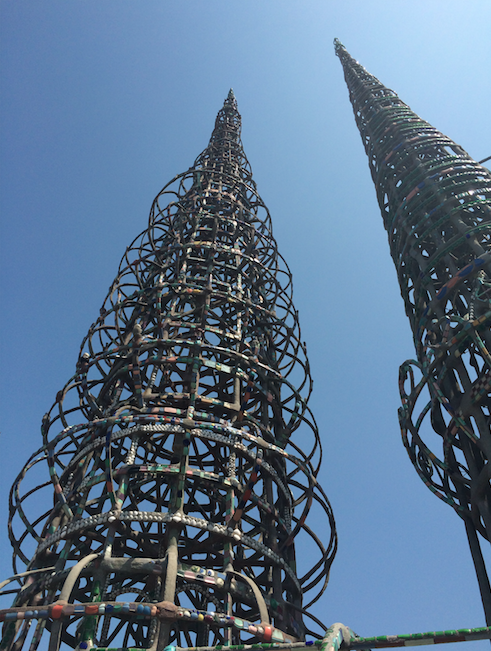In 1957, an aerospace engineer named Bud Goldstone drove out to 107th Street in South Los Angeles to get a first-hand look at the Watts Towers. Initially, the monumental series of interconnected structures, built from steel rods, encased in concrete, and decorated with an endless array of found ornaments, interested Goldstone only as an academic challenge: his fellow engineers had proposed theories about the site’s structural characteristics that he believed were incorrect.
But by 1959, Goldstone was part of a grassroots movement to save the towers from demolition due to their alleged instability, and performed a stress test that applied 10,000 pounds of tension to the towers to prove their structural integrity (the truck used to rig the test lifted off the ground, but the towers stayed standing).
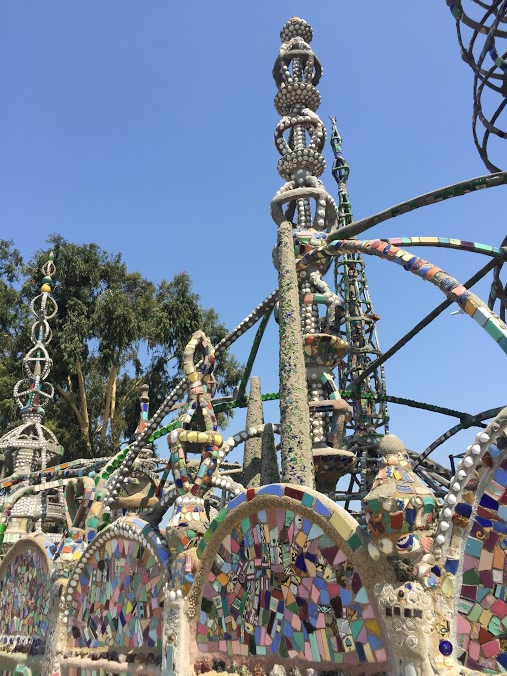
It’s been five and a half years since LACMA began a partnership with the City of Los Angeles’s Department of Cultural Affairs to manage the day-to-day maintenance and develop a comprehensive plan for the preservation of the towers—the most recent of many conservation efforts over the years, and one that will keep the world-renowned monument standing for decades.
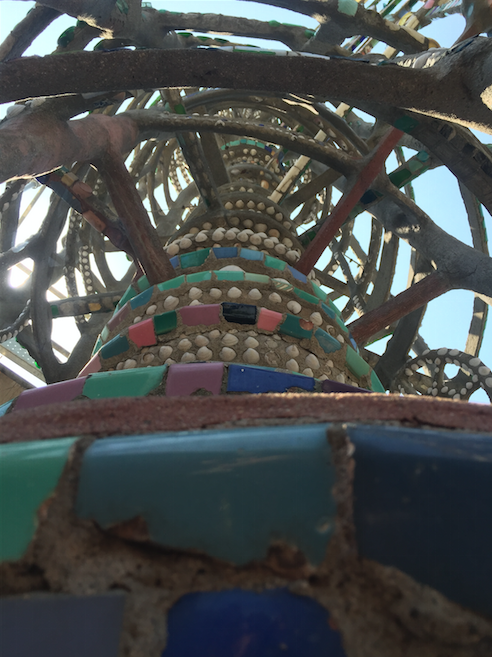
LACMA’s team of conservators, led by Senior Scientist Frank Preusser, spent much of past few years monitoring the site. Collaborating with UCLA’s Department of Civil Engineering, the team installed a weather station, tilt-meter, wind sensor, crack monitors, and accelerometers that yielded greater insight into the primary forces affecting the towers’ longevity: heat and wind stress.
According to Blanka Kielb, one of the two LACMA conservators working on the project, the combination of rigid materials that make up the towers, along with the almost-constant climate stresses, contribute to cracks forming in the cement. In high daytime temperatures, the cement layer of the towers expands on the sun-facing side, which causes the tallest towers on the site to lean away from the sun; the cement then contracts as the temperature cools in the evening, meaning the structure endures this movement daily. Over time, this daily tilt in the towers causes cracks to form; once cracks form, water can get in to the steel armature, causing corrosion.
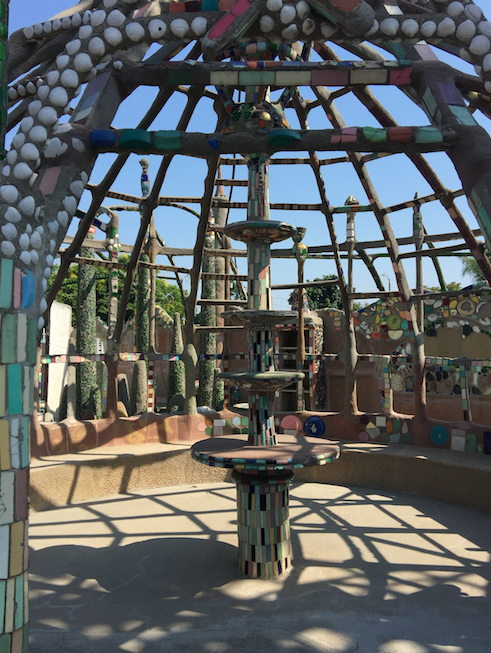
Moreover, that tower is connected to other structures through overhead bands of the same steel-and-concrete construction, so it transfers that stress onto other parts of the site, including the circular “Gazebo” sitting area. Kielb and her co-conservator, Traci Lucero, are mitigating that transfer of stress in a surgical way: by cutting the overhead connected bands and installing steel joints that can flex and absorb the stress created by the lean of the tower, then applying a polymer-amended mortar with a silicone expansion join that’s able to flex along with the joints, and finally texturizing and color-matching the silicone outer layer to integrate it visually with the rest of the structure.

By relieving structural stress, these interventions are designed to prevent cracks in the cement that allow water to enter and corrode the steel underneath—a core problem that previous restoration efforts sometimes exacerbated by using ultra-hard materials like epoxy. The conservation team tested dozens of mortars, adhesives, and water repellants to determine which would be appropriate for the site. The final range of materials includes a “migrating corrosion inhibitor” that migrates through the cement down to the steel to form a protective coating, and a liquid water repellant that chemically reacts with the cement layer itself to make it hydrophobic.
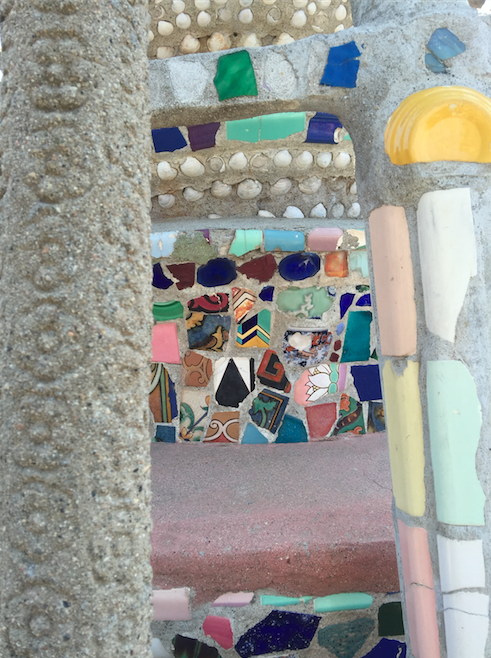
The result of these years of monitoring, testing, and experimentation is a series of 20 operating procedures that comprise LACMA’s preservation plan. But it will take more than just two conservators and a research assistant to continue their current efforts. Even a seemingly minor problem like ornaments popping off in the heat (because their rates of expansion differ so much from the concrete to which they’re affixed) requires daily monitoring. As Kielb explained, “We have many original ornaments that we’ve inventoried, but if we don’t know where they go, we can’t put them back. And we’re not going to just make things up; it would be unethical for us to fabricate things that weren’t there.”
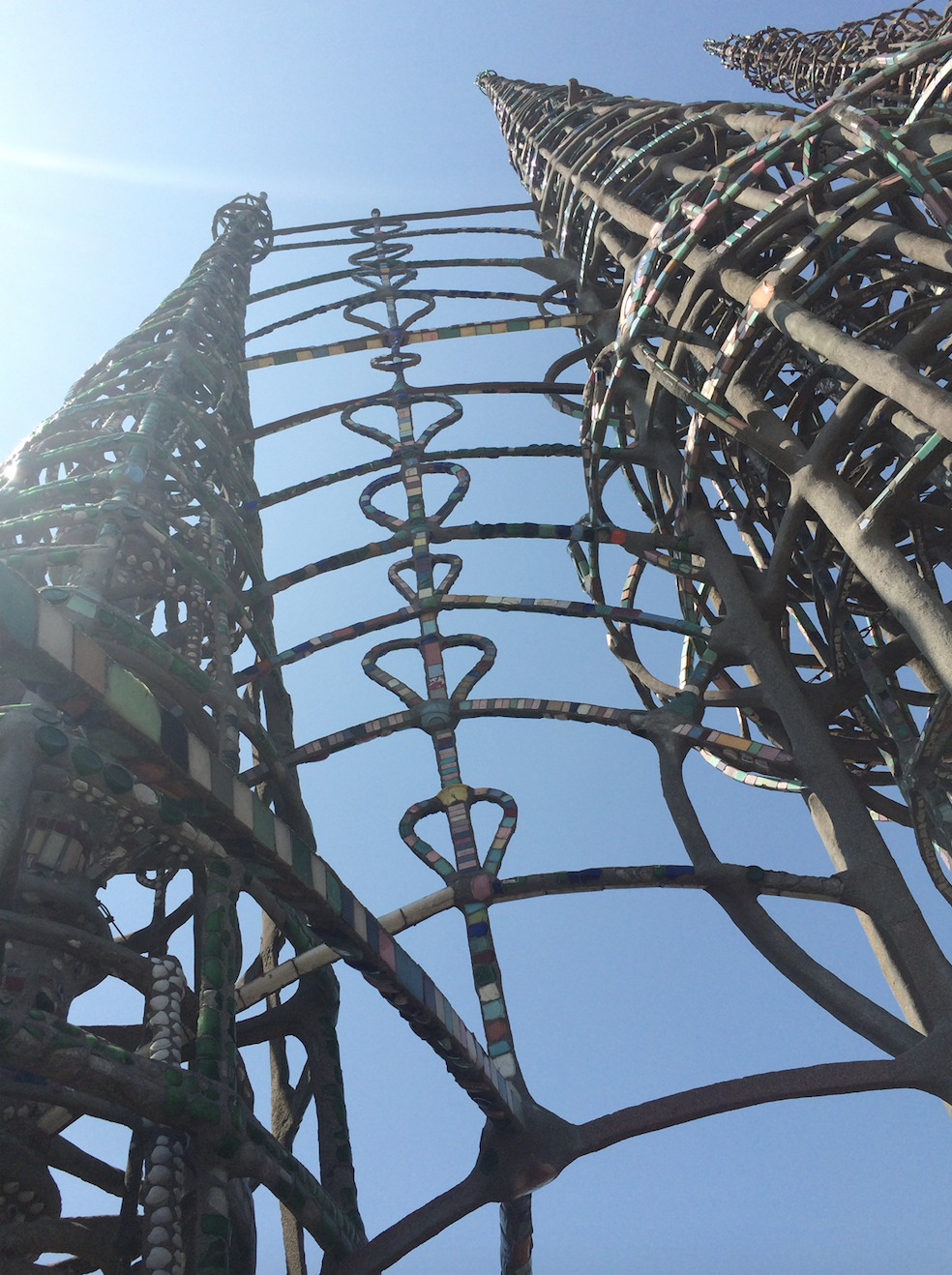
Before now, major restoration efforts on the towers were required every five to seven years. With sufficient support, Kielb and Lucero are confident that LACMA’s preservation plan would reduce the necessity of major restoration work to once every 15–20 years, and keep the towers standing for decades to come. Later this summer, we’ll update you on the conservation work being done on one of the structures, The Ship.



